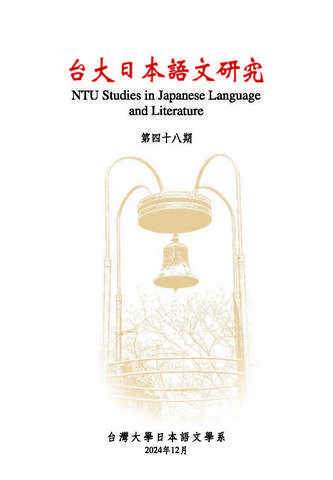 |
 本站僅提供期刊文獻檢索。 本站僅提供期刊文獻檢索。
【月旦知識庫】是否收錄該篇全文,敬請【登入】查詢為準。
 最新【購點活動】 最新【購點活動】
|
| 篇名 |
從形容詞思考日本昔話詞彙──以基本度.品詞比.語意領域為線索(Observations on the Adjectives From Japanese Folktale: Observation Through the Fundamentals, Composition Ratio of Parts of Speech, and Semantic Field)
|
| 並列篇名 |
形容詞から日本昔話語彙を考える-基本度.品詞構成比.意味分野別を手掛かりに- |
| 作者 |
林立萍 |
| 中文摘要 |
本稿以現代日本國語教育所依據的學校語法,透過教育用基本詞彙、詞類構成比、語意領域,從形容詞的角度探討日本昔話詞彙的特徵。結果浮現以下3點:1.將近9成的形容詞屬教育用基本詞彙。2.從詞類構成比窺知日本昔話的文體呈現非「摘要性」的性格,比較接近以描寫對象性質或狀態的「樣態描寫」。3.與「心」有關的形容詞最多。其中,多為表好惡.愛憎之形容詞,令人關注。日本昔話詞彙的形容詞究竟描繪出什麼樣的人物像?或是這些形容詞是如何修飾出場人物,留作他日探討。 |
| 英文摘要 |
本稿は、現代日本の国語教育が依拠した学校文法の形容詞に焦点を当て、既存の教育基本語彙、品詞構成比、意味分野別から日本昔話語彙の特徴を探ろうとする。結果、以下の3点を浮き彫りにした。1.約9割近くの形容詞が既存の教育基本語彙表に見られる。2.品詞構成比から昔話の文体が「要約的」ではなく、対象を質や状態によって表現する相の類の比率が高い「ありさま描写的」性格に近いと見受けられる。3.「心」項目にかかわる形容詞が一番多い。そのうち、好悪.愛憎を表現する形容詞が目立っている点で注目される。日本昔話語彙に使用される形容詞からどのような人物像が伝えられるのか、もしくは、それがどのような登場人物を修飾するのか、などについては、今後の課題として検討する。
This paper attempts to explore the characteristics of the Japanese folktale vocabulary. As a result, the following three points were highlighted. 1. Nearly 90% of the adjectives are basic vocabulary for education. 2. The composition ratio of parts of speech of vocabulary in Japanese folktale is less "summary" and more "descriptive", which describes the nature or state of the object. 3. Adjectives related to "heart" items are the most common. Among them, adjectives expressing likes and dislikes, love and hate are noteworthy for their prominence. What kind of characters are portrayed by the adjectives in the Japanese folktale? Or how do these adjectives modify the characters in the scene? Due to the limitation of space, these issues will be left for future discussion. |
| 起訖頁 |
63-85 |
| 關鍵詞 |
形容詞、教育基本詞彙、詞類構成比、語意領域、日本昔話詞彙、形容詞、教育基本語彙、品詞構成比、意味分野、日本昔話語彙、Adjectives、educational fundamental vocabulary、composition ratio of part of speech、vocabulary in Japanese folktale |
| 刊名 |
台大日本語文研究 |
| 期數 |
202206 (43期) |
| 出版單位 |
國立臺灣大學日本語文學系
|
| 該期刊-上一篇 |
I Am a Cat中的「不可譯性」:主體性.作品類型.藝術.文本規範.宗教性(On the Untranslatability of I Am a Cat: Subjectivity, Genre, Art, Textual Norms, and Religion) |
| 該期刊-下一篇 |
從「名詞+だけだ」來觀察「量」與「質」的交錯──兼以中日對照的觀點(Does Noun+dakeda Mean Quantity or Quality? Including a contrasting perspective between Japanese and Chinese) |
| |

